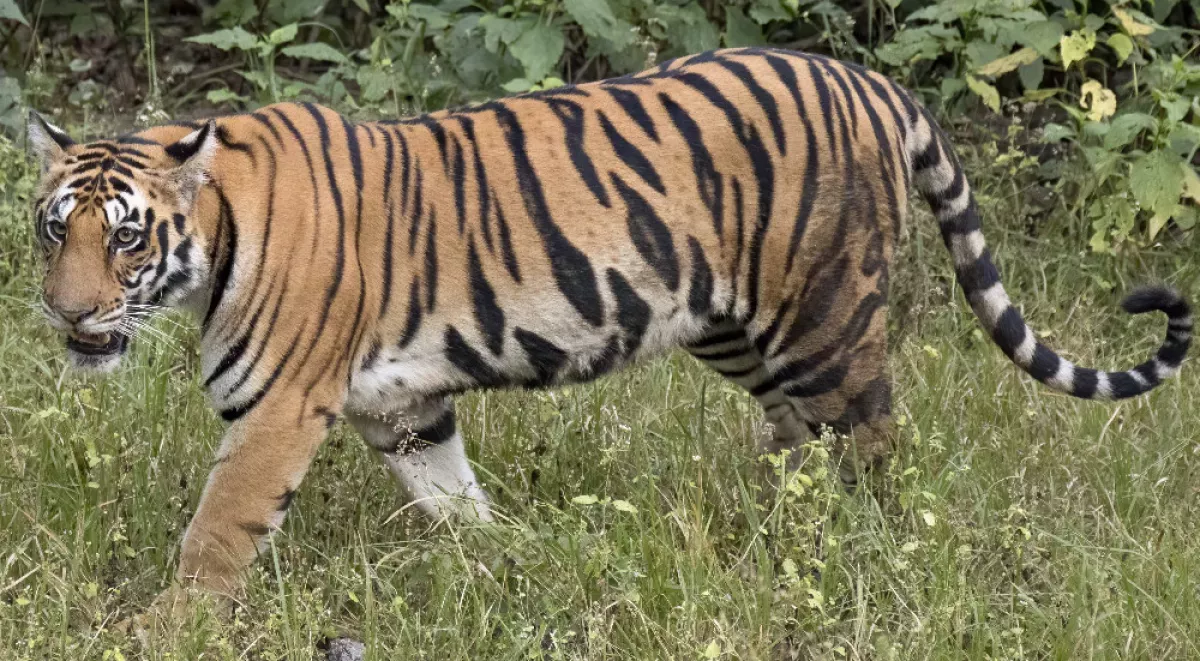The tiger is a large, powerful cat native to Asia, belonging to the genus Panthera. It is characterized by its orange fur with black, mostly vertical stripes, a muscular build, large head and paws, and a long tail. Traditionally, tigers have been classified into nine subspecies, although some classifications recognize only two: mainland Asian tigers and the island tigers of the Sunda Islands.
7 hours ago : Red Sox face Tigers: Campbell, Wong return to lineup; game odds preview.
The Red Sox and Tigers faced off, with Kristian Campbell and Connor Wong returning to the Red Sox lineup. Predictions, odds, starting pitchers, betting trends, and stats were previewed before the game.
1925: Estimated 80,000 tigers killed between 1875 and 1925
An estimated 80,000 tigers were killed by humans between 1875 and 1925.
1935: Tiger attacks in the Sundarbans caused 1,396 human deaths
From 1935, tiger attacks in the Sundarbans caused 1,396 human deaths until 2006 according to official records of the Bangladesh Forest Department.
2003: Tiger attack ends Siegfried & Roy performance
In 2003, Siegfried & Roy's act ended when a tiger attacked Roy during a performance in Las Vegas.
2004: Tiger voted world's favourite animal
In a 2004 online poll, the tiger was voted the world's favourite animal with 21% of the vote.
2006: Tiger attacks in the Sundarbans caused 1,396 human deaths
Until 2006, tiger attacks in the Sundarbans caused 1,396 human deaths from 1935 according to official records of the Bangladesh Forest Department.
2009: Tigers were the most traded circus animals
In 2009, tigers were the most traded circus animals.
2010: Anti-poaching operations in Nepal
In 2010, anti-poaching operations were established in Nepal, which led to increased cooperation and intelligence sharing between agencies.
2011: Increase in anti-poaching patrol efforts in Russia
During 2011, anti-poaching patrol efforts increased in four Russian protected areas, contributing to reducing poaching, stabilizing the tiger population, and improving ungulate protection.
2014: Anti-poaching patrol efforts in Russia
By 2014, increased anti-poaching patrol efforts in four Russian protected areas contributed to reducing poaching, stabilizing the tiger population, and improving ungulate protection.
2015: Decrease of poaching frequency in Taman Negara
In 2015, anti-poaching patrols in the 1,200 km large core area of Taman Negara lead to a decrease of poaching frequency.
2016: Decrease of poaching frequency in Taman Negara
In 2016, anti-poaching patrols in the 1,200 km large core area of Taman Negara lead to a decrease of poaching frequency.
2018: Tiger most popular wild animal
A 2018 study found the tiger to be the most popular wild animal based on surveys, as well as appearances on websites of major zoos and posters of some animated movies.
2018: Decrease of poaching frequency in Taman Negara
During 2018, anti-poaching patrols in the 1,200 km large core area of Taman Negara lead to a decrease of poaching frequency.
2019: Poaching declared serious crime
In 2019, poaching and trafficking were declared to be moderate and serious crimes.
2020: Captive tiger population in the US
In 2020, only 6% of the captive tiger population in the United States were being housed in zoos and other facilities approved by the Association of Zoos and Aquariums.
2020: Captive tiger populations in Asia, US and Europe
In 2020, there were over 8,000 captive tigers in Asia, over 5,000 in the US and no less than 850 in Europe.
2022: Private keeping of tigers banned in the US
In 2022, the keeping of tigers and other big cats by private people was banned in the US.
2025: Tiger reintroduction planned for Kazakhstan
In Kazakhstan, habitat restoration and reintroduction of prey species in Ile-Balkash Nature Reserve have progressed and tiger reintroduction is planned for 2025.
Mentioned in this timeline
Myanmar also known as Burma is the largest country in...
India officially the Republic of India is a South Asian...
China officially the People's Republic of China PRC is located...
Kazakhstan a landlocked country in Central Asia with a small...

The domestic cat is a small domesticated carnivorous mammal and...
Russia officially the Russian Federation is a transcontinental country extending...
Trending

14 minutes ago Wendy Williams' documentary 'Trapped' explores her health struggles and guardianship battle: Trailer released.

14 minutes ago Osama bin Laden claim sparks debate: Piers Morgan confronts Pakistani panelist on TV.

2 hours ago Sean Penn defends Woody Allen, expresses willingness to collaborate despite allegations.

2 hours ago Wes Anderson discusses 'The Phoenician Scheme' and Cannes party bus experience.

3 hours ago Tracker Season 3 Spoilers: Finale Revelation, Jensen Ackles, and Cast Changes Unpacked.

3 hours ago Ishaan Khatter at Cannes 2025: Indian Films and Celebrities Shine on Global Stage
Popular

Pope Francis is the current head of the Catholic Church...

Michael Jordan also known as MJ is an American businessman...

Cristiano Ronaldo often nicknamed CR is a highly decorated Portuguese...

Jupiter the fifth planet from the Sun is the Solar...

LeBron James nicknamed King James is a professional basketball player...

Ronald Reagan the th U S President - was a...
